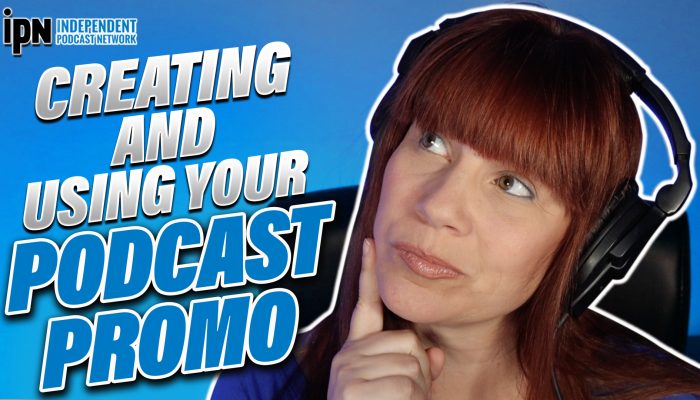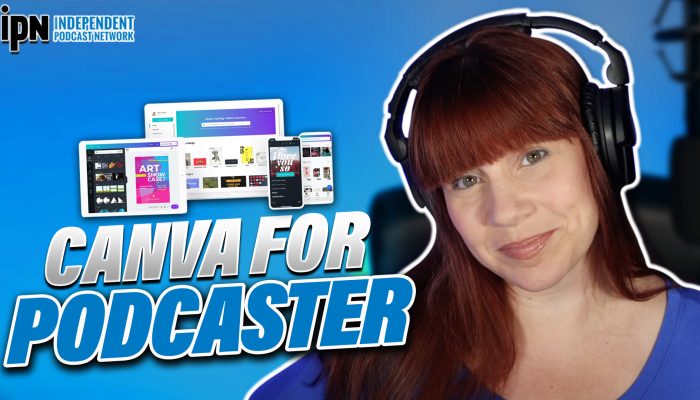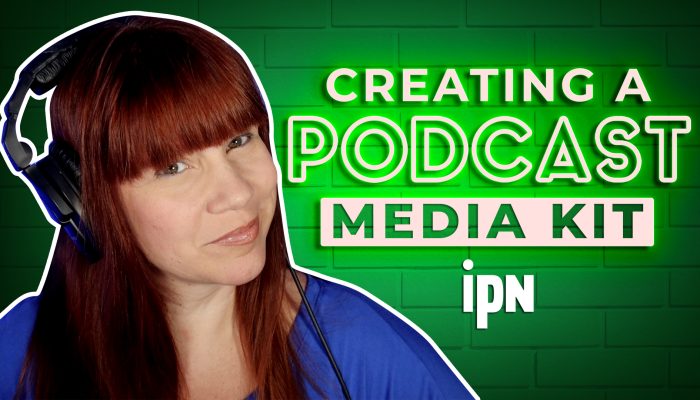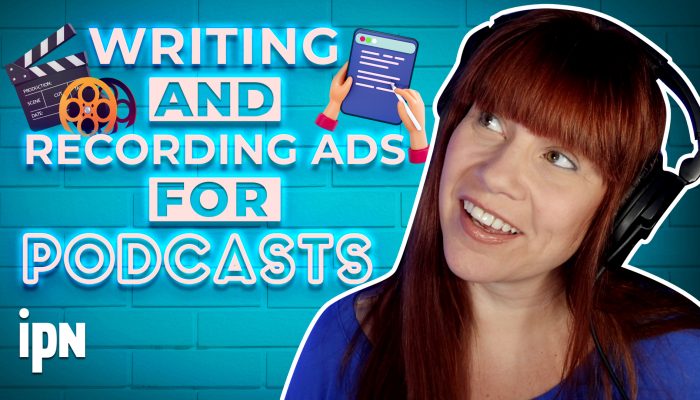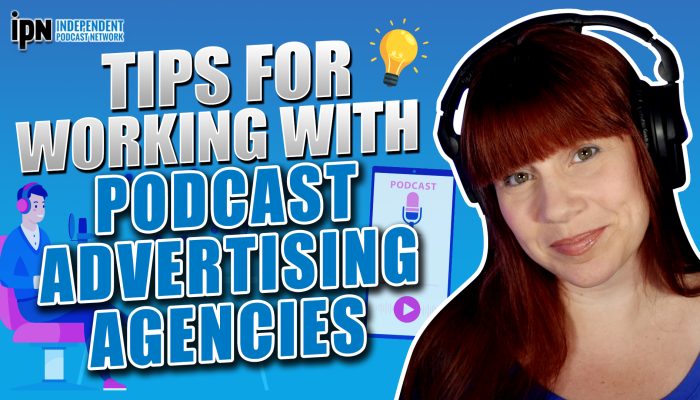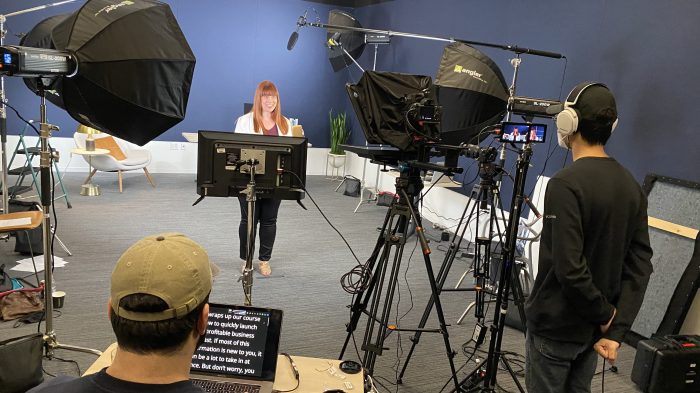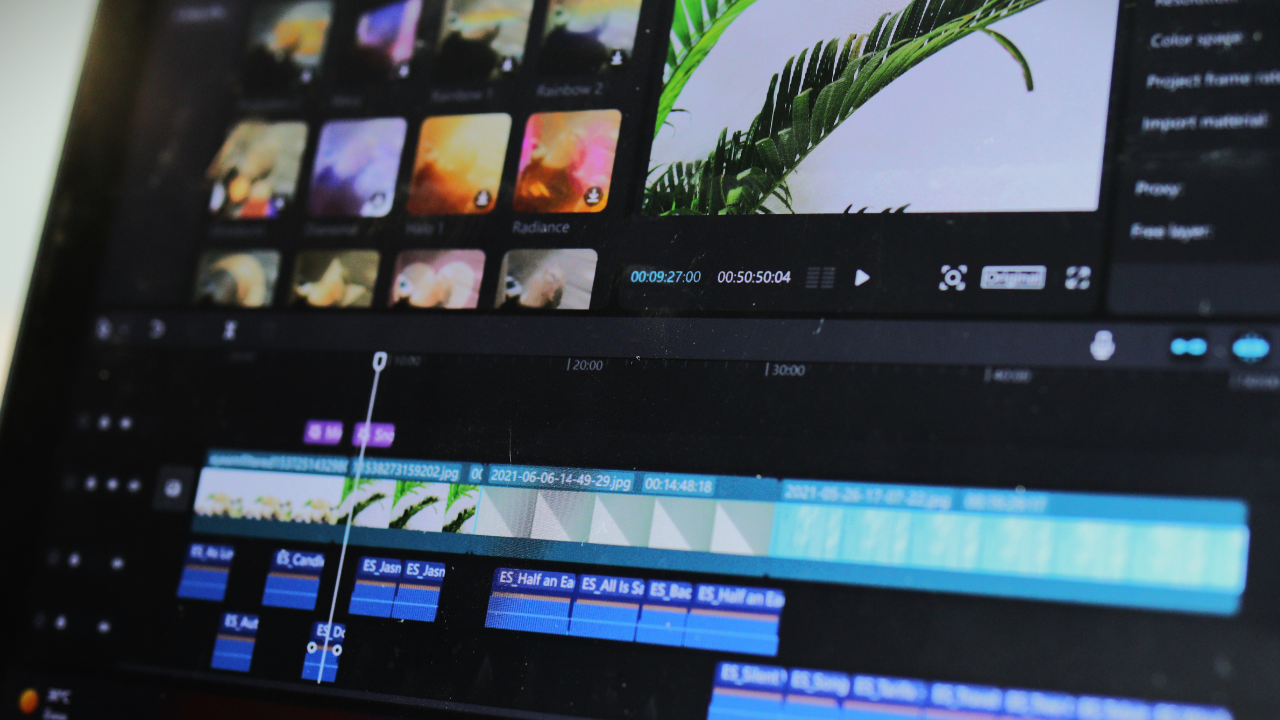
Audiograms are more than just audio clips. They’re audio files transformed into dynamic, shareable video content, adding a visual dimension to your podcasts. In a digital landscape where visual content often gets more attention, audiograms offer a unique way for your podcast to cut through the noise.
By creating an audiogram, you’re not only sharing a glimpse of your podcast’s content, but you’re also providing interesting, eye-catching content for platforms where users might not typically expect to encounter podcasts.
What is an Audiogram?
An audiogram, in the simplest terms, is a blend of audio and visual components. It combines a piece of audio – often a snippet from your podcast – with a static image or a simple animation to create a shareable video file. This helps people better understand your content with the average person remembering 55% more of the information they receive when it’s paired with an image.
These video files often include an animated waveform or a frequency spectrum that moves in sync with the audio, providing a visual representation of your auditory content. To enhance accessibility and comprehension, captions or subtitles are sometimes added.
How Can an Audiogram Help Your Podcast?
While not an essential aspect of podcasting, using audiograms can help you reach a broader audience and offer bite-sized pieces of content for new listeners to try out your podcast.
Compatibility with Visual Platforms
Audiograms add a visual dimension to your podcasts. This adaptation makes your audio content compatible with platforms such as Instagram, and TikTok which primarily support and promote visual content. By transforming your podcast snippets into audiograms, you’re effectively meeting the platform’s—and its users’—preferences.
Attention-Grabbing Content
To grow on social media, immediately capturing user attention is essential. By combining visual and audio content, you can create more attention-grabbing posts. Audiograms provide a quick, engaging snapshot of your content to immediately pull your audience in and direct them to your full podcast episodes.
Improved Accessibility
Adding captions to your audiograms improves the accessibility of your content. Improved accessibility broadens your audience base and ensures that more people can enjoy your content.
Grow Your Digital Presence
Creating audiograms gives your audience a piece of content to share and interact with. Each interaction—be it a like, share, or comment—increases the visibility of your podcast. Using audiograms in your social media marketing strategy is a practical and efficient way to reach new listeners and grow your podcast’s audience.
How to Create an Audiogram
Ready to create your first audiogram? Here are the basic steps to make your first audiogram using audio from your podcast and a visual element that you create:
- Choose a segment from your podcast: The first step is to select a compelling segment from your podcast. This could be a profound insight, a humorous exchange, or any moment that encapsulates the essence of the episode. Remember, this clip will serve as a teaser for your audience, so pick something that will pique their interest and make them want to hear more.
- Extract the audio clip: Once you’ve identified the perfect segment, the next step is to extract this audio clip. There are several audio editing tools available online, both free and paid, that you can use to cut this segment from your full podcast episode.
- Create a visual element: Now, it’s time to create a visual component to pair with your audio. This could be a static image, like your podcast logo, or a simple animation. Some podcasters use a waveform or a frequency spectrum that moves in synchronization with the audio.
- Add captions: Adding captions to your audiogram is not only a great way to enhance accessibility but also helps in catching the attention of viewers. You can manually type in the captions or use automated transcription services available online.
- Combine audio and visual elements: Next, combine your audio clip, visual component, and captions using a video editing tool. There are several online tools available specifically designed for creating audiograms.
- Review and export: Finally, review your audiogram. Make sure the audio is clear, the captions are synced correctly, and the visual component looks good. Once you’re satisfied, export your audiogram as a video file.

Tools You Can Use to Create an Audiogram
Creating an audiogram doesn’t require a deep understanding of audio and video editing. With the right tools, you can generate attractive audiograms with ease. So, here are a few options you can choose from to start creating your own audiograms:
Headliner
Headliner is a robust online tool that makes it easy to create audiograms. It allows you to add captions, choose from various waveform styles, include images or animations, and more. Plus, it offers an ‘auto-generate’ function for subtitles and a wide selection of export options.
Wavve
Wavve offers a user-friendly interface to create audiograms. You can customize the design, choose between different waveform styles, add text, and more. The platform also provides pre-designed templates, making it easy for beginners to get started.
Descript
Descript is a comprehensive audio editing tool for podcasters that also offers audiogram creation capabilities. It has a built-in transcription service, which makes adding captions to your audiograms simple.
Adobe Premiere Pro
For those who have more experience with video editing, Adobe Premiere Pro offers more flexibility and advanced features than the previous tools. While it doesn’t auto-generate audiograms, you can fully customize your content to your exact liking. This can help make your content stand out from the competition.
Tips to Make Your Audiograms Better
To go beyond the basics and start creating high-quality audiograms that captivate your audience, you need to consider every aspect of your content. Here are a few tips to enhance the quality of your audiograms:
- Leverage storytelling: Choose segments that tell a story or spark curiosity. Effective storytelling in your clips can drive listeners to seek out the full podcast episode.
- Design consistency: Maintain a consistent design language across your audiograms. This strengthens your brand identity and helps establish a professional and cohesive aesthetic.
- Platform-specific optimization: Each social media platform has unique specifications for video content. Tailor your audiograms to each platform in terms of aspect ratio, length, format, and even the times you post for maximum engagement.
- Embed call-to-actions: Encourage listener interaction by strategically embedding call-to-actions within your audiogram. This could be an invitation to share, comment, subscribe, or check out the full episode.
- Analyze performance: Use your podcast’s analytics to understand what works and what doesn’t. Keep track of engagement metrics and use this data to inform your future audiogram creation strategy.
Conclusion
With the right approach and a bit of practice, you can start using audiograms to expand your podcast’s reach and engagement on social media. Audiograms give you a way to showcase your content in a new format that quickly engages your audience. This breaks down your podcast episodes into small, digestible chunks making it a great way to repurpose your content.
